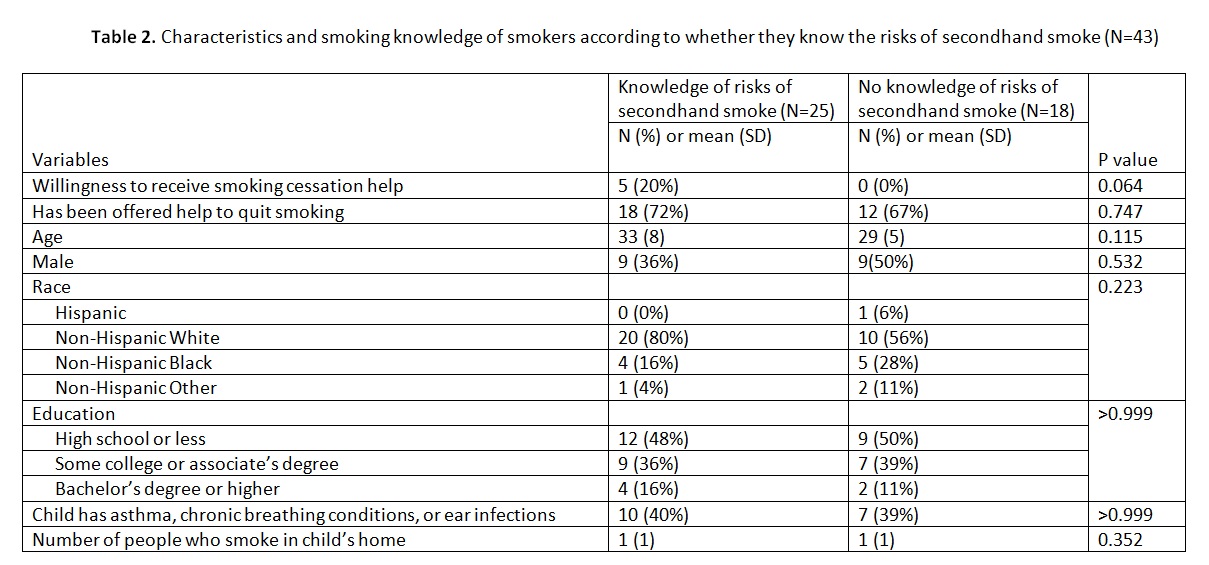NM-278
Second-hand tobacco exposure: parental knowledge about health impact and feasibility of cessation
Walia H, Miller R, Tumin D, Tobias J, Sebastian R
Nationwide Children's Hospital, Columbus, Ohio, United states
Introduction: One in three children in the United States lives with a tobacco smoker. As the primary source of smoke exposure is in the home, the smoking behaviors of parents and other caregivers are key determinants of a child's exposure to second-hand smoke. The detrimental impact of second-hand smoke on children has been well established. The perioperative period offers an opportunity to discuss smoking cessation strategies and how risk factors in the home can be mitigated to improve a child’s health.
Methods: This prospective study was IRB approved and verbal consent was obtained. A survey was presented to the parents and care givers in dental operating rooms during the preoperative phase. The primary outcome was willingness to obtain resources regarding smoking cessation. The primary aim was to determine the feasibility of using the preoperative encounter to offer smoking cessation resources to parents. The secondary aim was to compare willingness to receive smoking cessation resources according to knowledge of the risks of smoking (i.e., being aware of second-hand smoking and knowing that it posed a risk to their child).
Results: Awareness of risks due to second-hand smoking was 65% in the overall cohort and 58% among current smokers (p=0.284 vs. non-smokers). Among smokers in our study, only 12% were interested in smoking cessation help. Knowledge of the risks of second-hand smoke was not associated with a willingness to receive smoking cessation resources.
Discussion: In the current study, only 58% of smokers agreed that second-hand smoke could be harmful, much lower than a national study which found that 90% of smokers recognize that environmental tobacco smoke could be harmful. Although some of this difference may be caused by subjects being less familiar with the term second-hand smoke, these results suggest that outpatient surgery centers such as our dental center may present an opportunity to educate parents about the adverse effects of smoking. Even among smokers who were aware of the harm of second-hand smoke, only 20% expressed a willingness to receive smoking cessation resources. The low percentage of smokers willing to receive smoking cessation resources suggests that knowledge is not sufficient to motivate these parents to quit smoking. As anesthesiologists, this setting could present a great opportunity to educate caregivers on the acute and long term effects of smoking.
Conclusion: This study suggests there is a need for better methods of educating caregivers on the potential side effects of second-hand smoke and of emphasizing the issue of cessation.
Top













